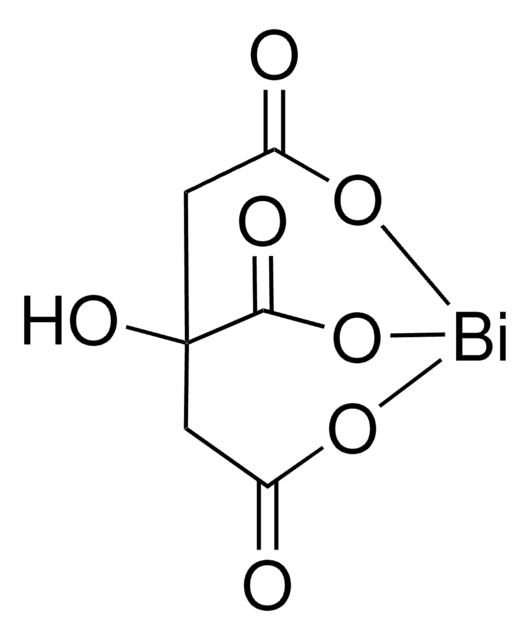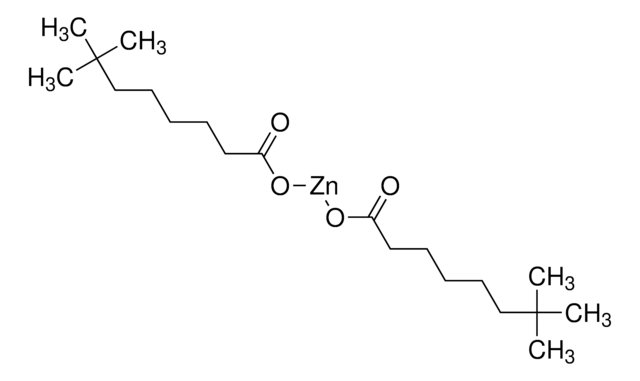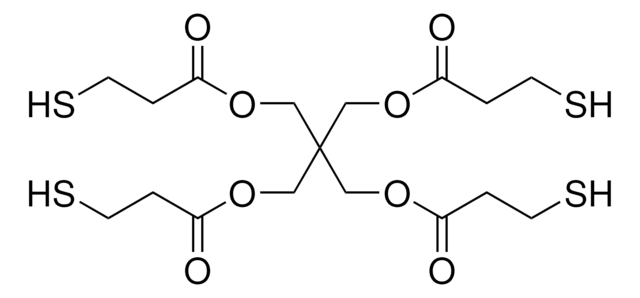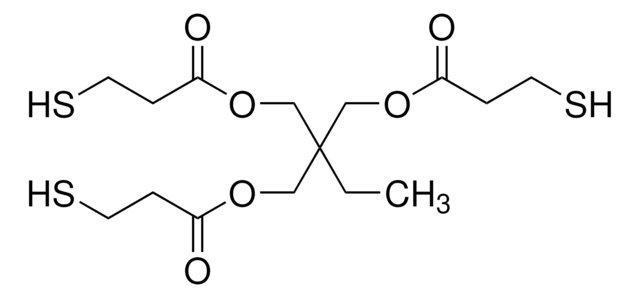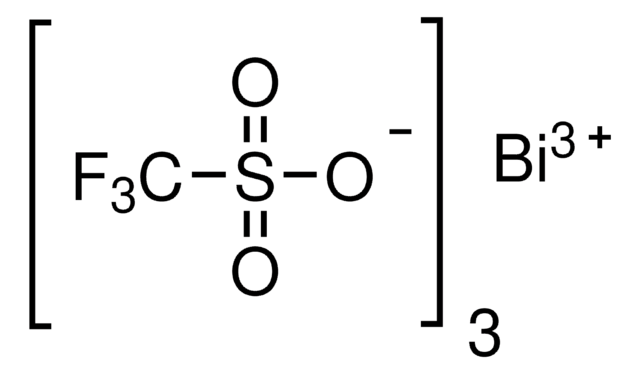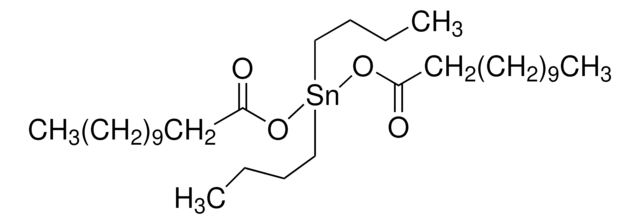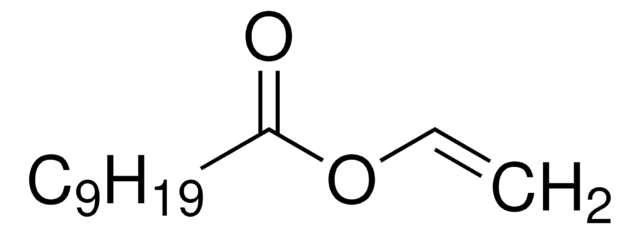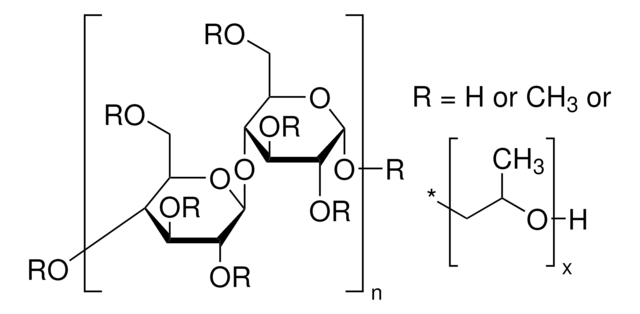추천 제품
양식
liquid
Quality Level
반응 적합성
core: bismuth
reagent type: catalyst
refractive index
n20/D 1.479 (lit.)
bp
300 °C (lit.)
density
1.145 g/mL at 25 °C (lit.)
SMILES string
CCCCCCC(C)(C)C(=O)O[Bi](OC(=O)C(C)(C)CCCCCC)OC(=O)C(C)(C)CCCCCC
InChI
1S/3C10H20O2.Bi/c3*1-4-5-6-7-8-10(2,3)9(11)12;/h3*4-8H2,1-3H3,(H,11,12);/q;;;+3/p-3
InChI key
TUQRJVHQQXIPMN-UHFFFAOYSA-K
애플리케이션
Bismuth neodecanoate can be used as a catalyst to synthesize:
- Thermoplastic polyurethanes by reacting polycaprolactone diols, diisocyanates, and diols with anthracene group.
- Polysiloxanes from hydroxy-terminatedpoly(dimethylsiloxanes) and ethyl silicate.
Storage Class Code
10 - Combustible liquids
WGK
WGK 1
Flash Point (°F)
Not applicable
Flash Point (°C)
Not applicable
개인 보호 장비
Eyeshields, Gloves
이미 열람한 고객
Yiwei Kang et al.
ACS nano, 14(4), 4336-4351 (2020-04-11)
The abundant species of functional nanomaterials have attracted tremendous interests as components to construct multifunctional composites for cancer theranostics. However, their distinct chemical properties substantially require a specific strategy to integrate them in harmony. Here, we report the preparation of
Copolymer films containing amphiphilic side chains of well-defined fluoroalkyl-segment length with biofouling-release potential
Galli G, et al.
Royal Society of Chemistry Advances, 6, 67127-67135 (2016)
Yin Chen et al.
Biomaterials science, 7(8), 3450-3459 (2019-07-04)
Bismuth-containing nanoparticles (BNPs) are potential enhancers for tumor radiotherapy. Improving the bioavailability and developing synergistic therapeutic regimens benefit the drug transformation of BNPs. In the present study, we prepare a mesoporous silica-coated bismuth nanorod (BMSNR) camouflaged by a platelet membrane
Yuhao Li et al.
Nanoscale, 9(38), 14364-14375 (2017-07-12)
Overtreatment as a crucial modern medicine issue needs to be urgently addressed. Theranostic agents supply a unique platform and integrate multiple diagnosis and therapies to deal with this issue. In this study, a core-shell MnS@Bi
Elisa Martinelli et al.
Biofouling, 32(1), 81-93 (2016-01-16)
Block copolymers made from a poly(dimethyl siloxane) (Si) and a poly(meth)acrylate carrying oxyethylene (EG) or fluoroalkyl (AF) side chains were synthesized and incorporated as surface-active components into a silicone matrix to produce cross-linked films with different surface hydrophilicity/phobicity. Near-edge X-ray
자사의 과학자팀은 생명 과학, 재료 과학, 화학 합성, 크로마토그래피, 분석 및 기타 많은 영역을 포함한 모든 과학 분야에 경험이 있습니다..
고객지원팀으로 연락바랍니다.